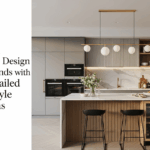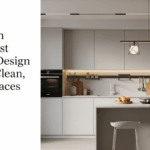7 Kitchen Cabinet Renovation Ideas for a Fresh Modern Look
7 Kitchen Cabinet Renovation Ideas – Updating your kitchen cabinets can be a game-changer, instantly upgrading the look and feel of the entire room. Here are seven amazing kitchen cabinet renovation ideas to create a fresh, modern look:
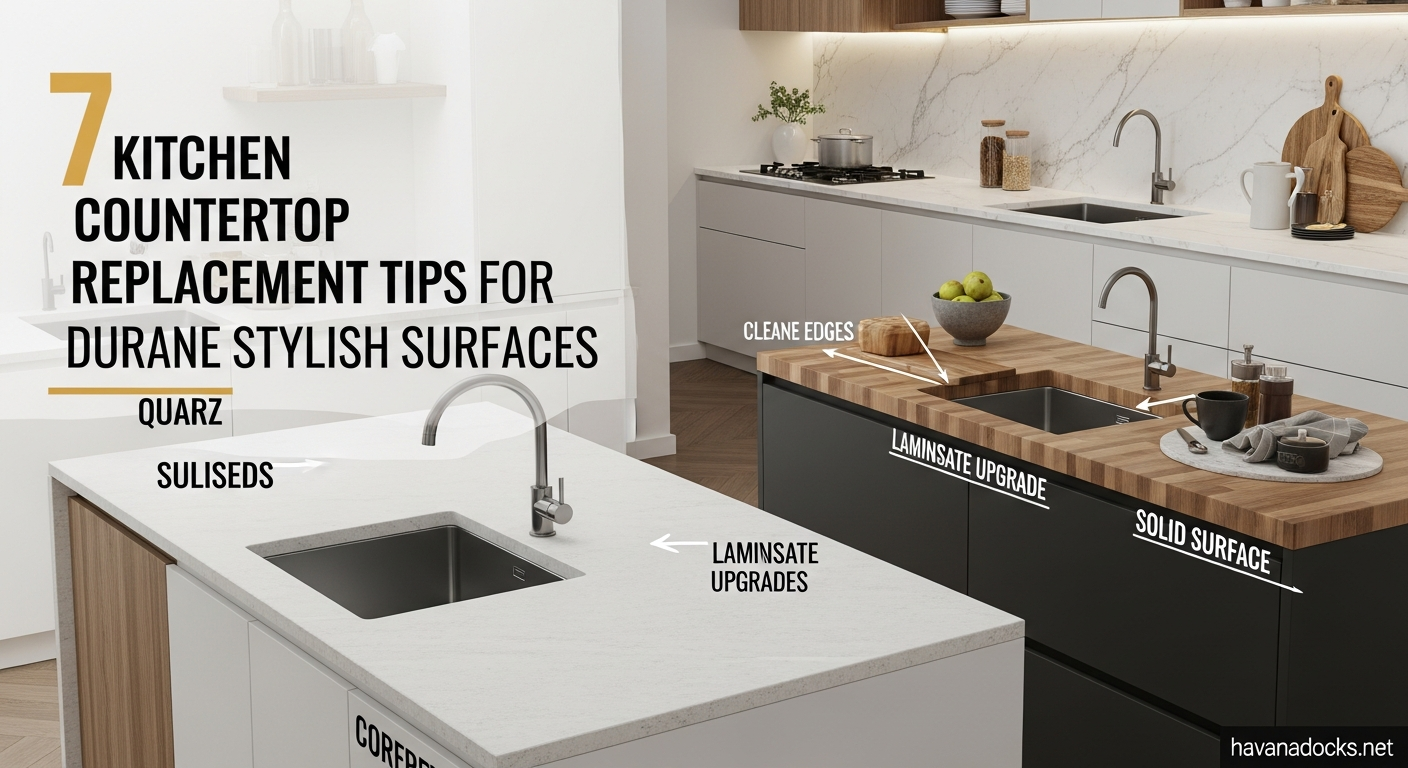
1. The Power of Paint: A Budget-Friendly Transformation
One of the most cost-effective and impactful kitchen cabinet renovation methods is a fresh coat of paint. It’s amazing how different your kitchen can look just by changing the color of your cabinets.
Think about current trends. Light and airy colors like whites, creams, and soft grays are incredibly popular for a modern aesthetic. However, don’t be afraid to go bold with a deep navy, emerald green, or even a cheerful pop of yellow for an accent island. Ensure to choose paint specifically designed for cabinets, which holds up better to daily wear and tear. Proper preparation, including cleaning, sanding, and priming, is paramount for a professional and durable finish.
2. Hardware Harmony: Small Changes, Big Impact
Replacing the hardware on your cabinets is another relatively inexpensive way to update their look. New knobs, pulls, and hinges can completely transform the style of your kitchen cabinet renovation, pushing it towards modern glamour or sleek minimalism, depending on your choices.
Consider brushed nickel or matte black hardware for a contemporary feel. Sleek, minimalist pulls or classic cup pulls can also add a touch of elegance. Make sure the new hardware is proportionate to the size of your cabinet doors and drawers. Before purchasing, take accurate measurements to ensure a perfect fit and avoid unnecessary drilling.
3. Refacing Magic: A Step Up from Painting
Refacing your cabinets involves replacing the doors and drawer fronts while keeping the existing cabinet boxes intact. This is a more involved kitchen cabinet renovation than painting, but it’s still significantly more affordable than replacing the entire cabinetry.
You can choose from a wide range of materials, styles, and finishes to perfectly match your desired aesthetic. Consider shaker-style doors for a timeless, versatile look or sleek, slab-front doors for a minimalist and modern appeal. Refacing is an excellent option if your cabinet boxes are in good condition but the doors are outdated or damaged.
4. Open Shelving Chic: A Modern Display
Integrating open shelving into your kitchen cabinet renovation is a fantastic way to add visual interest and create a more open and airy feel. Replace some of your upper cabinets with open shelves to display beautiful dishes, glassware, or decorative items.
This works beautifully for kitchens striving for a modern farmhouse or minimalist aesthetic. Ensure you’re comfortable with keeping the shelves organized and clutter-free, as everything will be on display. Choose shelves that complement your existing cabinets and consider adding under-cabinet lighting to highlight your displayed items.
5. Glass Front Doors: Adding Depth and Light
Replacing solid cabinet doors with glass-front doors is another excellent way to introduce light and visual interest into your kitchen. Glass-front cabinets create a more open and spacious feel, making your kitchen cabinet renovation visually appealing.
Consider different types of glass, such as clear, frosted, or textured, to achieve your desired level of privacy and visual style. Interior cabinet lighting will further enhance the display of your dishes and glassware. This option works particularly well for displaying collectibles or highlighting specific design elements within the cabinets.
6. Island Style: Enhancing Functionality and Aesthetics
If you have a kitchen island, consider updating its cabinets to create a focal point in your space. This kitchen cabinet renovation can involve painting the island a contrasting color, adding decorative panels, or even replacing the doors and hardware.
A kitchen island provides an opportunity to introduce a different style or color palette into your kitchen, adding character and visual interest. Consider features like built-in storage, seating areas, or even a wine cooler to enhance the functionality of your island.
7. Lighting Integration: Illuminating Your Renovation
Don’t underestimate the power of lighting in your kitchen cabinet renovation. Adding under-cabinet lighting is a simple but effective way to brighten your countertops and create a more inviting atmosphere.
Consider LED strip lights for energy efficiency and long-lasting performance. Interior cabinet lighting can also enhance the display of items behind glass-front doors. Proper lighting not only improves visibility but also highlights the beauty of your newly renovated cabinets.
Planning Your Kitchen Cabinet Renovation: A Step-by-Step Guide
A successful kitchen cabinet renovation requires careful planning and execution. Here’s a step-by-step guide to help you navigate the process:
1. Define Your Goals and Budget
Start by clearly defining your goals for the kitchen cabinet renovation. What do you want to achieve in terms of aesthetics, functionality, and storage? Set a realistic budget that encompasses all aspects of the project, including materials, labor, and any unexpected expenses.
2. Assess Your Existing Cabinets
Thoroughly assess the condition of your existing cabinets. Are the cabinet boxes structurally sound? Are the doors and drawer fronts in good condition or do they need to be replaced? Identifying any existing problems will help you determine the best kitchen cabinet renovation approach.
3. Choose Your Style and Materials
Consider your personal style and the overall aesthetic of your home when choosing your cabinet renovation materials. Are you drawn to a modern, minimalist look or a more traditional, farmhouse style? Select materials that are durable, easy to clean, and complement your existing kitchen décor.
4. Gather Inspiration and Research Options
Browse home decor magazines, websites, and social media platforms for inspiration. Research different kitchen cabinet renovation options and compare prices from various contractors and suppliers. Collecting ideas and information will help you make informed decisions and communicate your vision effectively.
5. Hire Professional Help (If Needed)
If you’re not comfortable tackling the kitchen cabinet renovation yourself, consider hiring a professional contractor. Get quotes from multiple contractors, check their references, and review their previous work before making a decision. A skilled contractor can ensure that the project is completed efficiently and to a high standard.
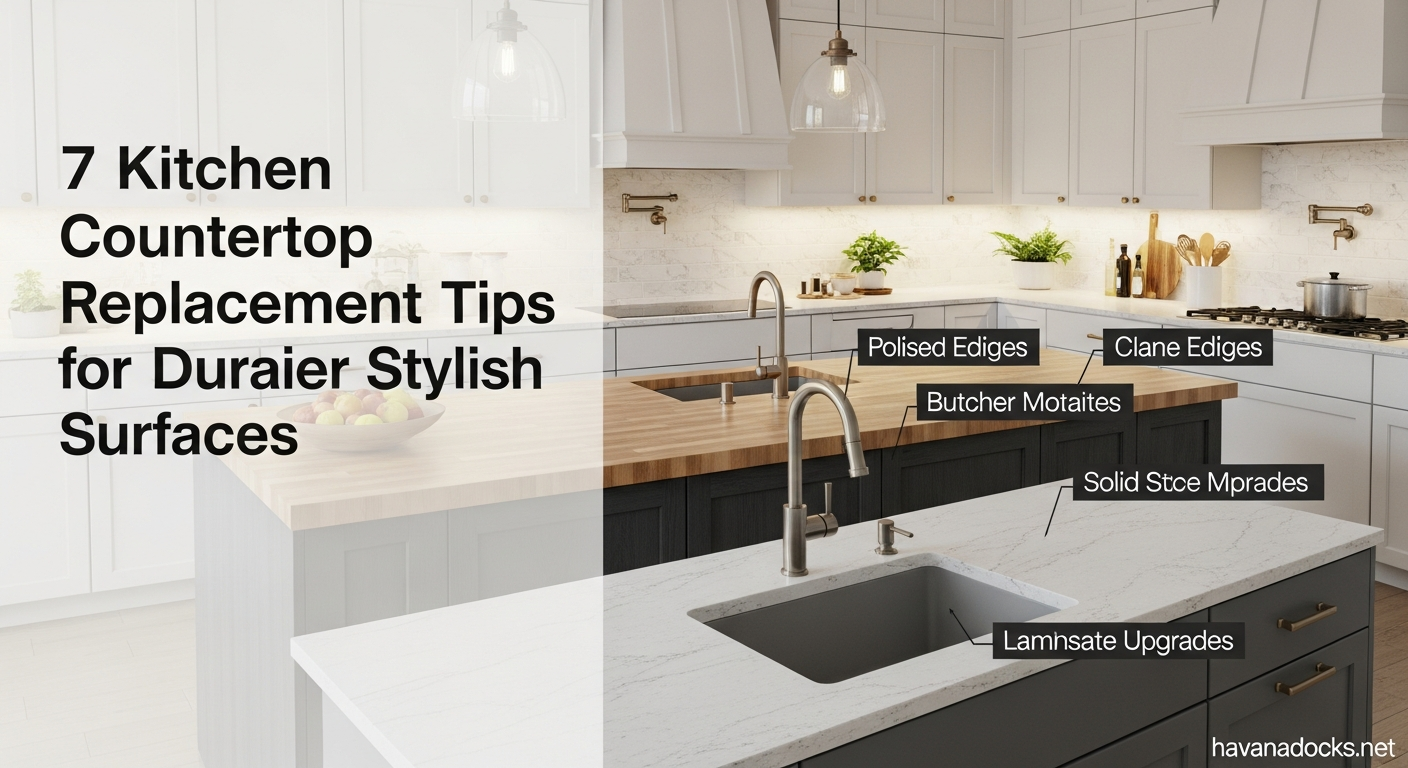
Benefits of Undertaking a Kitchen Cabinet Renovation
A kitchen cabinet renovation offers numerous benefits that go beyond just aesthetics. Here are some key advantages that make this upgrade one of the most impactful improvements you can make to your home:
1. Enhanced Functionality and Storage Efficiency
Renovating your kitchen cabinets allows you to customize your storage space based on your lifestyle. You can incorporate solutions like pull-out drawers, vertical dividers, lazy Susans, and built-in organizers to make daily tasks more efficient. This ensures every item—pots, spices, utensils, appliances—has its own dedicated spot, reducing clutter and improving workflow.
2. Improved Aesthetics and Modern Appeal
Cabinet renovation instantly refreshes the overall look of your kitchen. Whether you choose sleek modern finishes, warm wood tones, or a timeless classic style, new cabinetry creates a clean and cohesive appearance. This upgrade can completely transform outdated or worn-out spaces, making them feel brighter, more inviting, and visually appealing.
3. Increased Home Value
Kitchen upgrades consistently provide one of the highest returns on investment in home improvement. Modern and well-designed cabinets attract potential buyers, boosting both the market value and desirability of your property. Even simple updates like refacing, repainting, or replacing hardware can significantly enhance resale potential.
4. Better Use of Space
A renovation gives you the chance to rethink your layout and storage needs. You can eliminate unused areas, make upper cabinets taller, or add smart features to maximize vertical and horizontal space. This is especially valuable in smaller kitchens where every inch matters.
5. Enhanced Durability and Longevity
Older cabinets often suffer from wear, moisture damage, hinges that no longer align, or finishes that are peeling. Renovating replaces outdated materials with high-quality, durable options designed to withstand daily wear and tear. Upgraded finishes, sturdy hardware, and better construction ensure your cabinets last for many years.
6. Energy and Maintenance Efficiency
Modern cabinet materials and finishes are easier to clean, more resistant to moisture, and often eco-friendly. With smoother surfaces, soft-close features, and improved coatings, maintenance becomes easier and faster. This reduces long-term upkeep and helps your kitchen remain in great condition.
7. Improved Organization and Accessibility
Renovation lets you tailor cabinet height, depth, and accessibility features to your needs. For example, soft-close drawers, roll-out shelves, and corner solutions make storage more ergonomic. This means less bending, stretching, or searching for items—everything becomes easier to reach and use.
Increased Home Value
An updated kitchen is a major selling point for potential buyers. Renovating your cabinets can significantly increase the value of your home and make it more attractive to prospective purchasers.
Improved Functionality
A well-designed kitchen cabinet renovation can improve the functionality of your kitchen by optimizing storage space and making it easier to access frequently used items.
Enhanced Organization
New cabinets can provide additional storage options, such as pull-out shelves, drawer dividers, and spice racks, helping you to keep your kitchen organized and clutter-free.
Increased Efficiency
Improved functionality and organization can make cooking and meal preparation more efficient, saving you time and effort.
Enhanced Aesthetics
Renovated cabinets can dramatically improve the overall appearance of your kitchen, creating a more inviting and enjoyable space to spend time in.
Modernized Look
Updating your cabinets with modern materials, finishes, and hardware can give your kitchen a fresh, contemporary look.
Personalized Style
A kitchen cabinet renovation allows you to personalize your kitchen to reflect your unique style and taste.
Common Mistakes to Avoid During a Kitchen Cabinet Renovation
Even with careful planning, some common mistakes can derail your kitchen cabinet renovation. Here’s what to avoid to ensure your project runs smoothly, stays on budget, and delivers long-lasting results.
1. Ignoring Your Kitchen’s Workflow
One of the biggest mistakes is focusing purely on aesthetics without considering functionality. Poor workflow—such as placing cabinets too far from key appliances or ignoring the work triangle—can lead to daily inconvenience. Make sure cabinet placement supports natural movement between the sink, stove, refrigerator, and prep areas.
2. Choosing Style Over Durability
Trendy designs can be tempting, but they may not hold up to daily wear and tear. Many homeowners regret choosing delicate materials, glossy finishes that show fingerprints, or low-quality hardware. Always prioritize durability, especially in high-traffic kitchens.
3. Neglecting Proper Measurements
A single incorrect measurement can cause major delays and expensive fixes. Overlooking ceiling height, appliance clearance, or door swing direction may result in cabinets that don’t fit properly. Always measure at least twice—or better, have a professional verify all dimensions before fabrication begins.
4. Overlooking Storage Needs
Stylish cabinets are great, but if they don’t support your daily storage requirements, the kitchen can quickly become cluttered. Failing to plan for items such as pots, small appliances, spices, and cleaning supplies often leads to frustration later. Consider pull-outs, vertical dividers, deep drawers, and corner solutions to maximize every inch.
5. Cutting Corners on Hardware
Cabinet hardware—hinges, slides, handles—may seem minor, but they play a major role in daily functionality. Cheap hardware can lead to sagging doors, sticking drawers, or noisy operation. Investing in soft-close, high-quality mechanisms ensures smooth, long-lasting performance.
6. Skipping Proper Ventilation and Moisture Protection
Kitchens generate humidity, grease, and heat. Neglecting proper ventilation can cause premature damage to cabinets, especially wood. Moisture exposure near sinks and dishwashers can lead to warping or peeling finishes. Always incorporate good ventilation, splash guards, and sealants to protect cabinet materials.
7. Failing to Coordinate Cabinet Design With Appliances
Choosing cabinets before finalizing appliances can create mismatches in size, placement, or design. Oversized fridges, built-in ovens, or range hoods require precise cabinetry to fit seamlessly. Purchase your appliances first or plan their specifications early in the design phase.
8. Forgetting About Lighting
Lighting dramatically affects how cabinets look and function. Poor lighting placement can create shadows on work areas or make cabinet interiors hard to see. Integrate task lighting, under-cabinet LED strips, and ambient lighting to enhance both practicality and aesthetics.
9. Not Setting a Realistic Budget
Many homeowners underestimate the total cost of renovation—from materials to labor to unexpected adjustments. Failing to allocate a contingency fund (10–15%) can lead to stress or unfinished work. Plan a realistic budget and prioritize must-have features.
10. Attempting Complex Installations Without Expertise
DIY projects can be rewarding, but installing cabinets requires precise leveling, professional tools, and structural knowledge. A slight error can affect the alignment of the entire system. If you’re not experienced, hiring a professional helps ensure a clean and reliable installation.
Ignoring the Kitchen’s Overall Design
Don’t focus solely on the cabinets; consider how they will integrate with the rest of your kitchen’s design, including countertops, backsplash, flooring, and appliances.
Insufficient Budgeting
Overlooking hidden costs like hardware, installation, or unexpected repairs can lead to budget overruns. Always pad your budget to account for unforeseen expenses.
Not Checking Hardware Compatibility
Ensure that your new hardware is compatible with your existing cabinet door and drawer configurations to avoid issues with installation and functionality.
Neglecting Proper Preparation
Skipping essential steps like cleaning, sanding, and priming can result in a poor finish and reduced durability. Take the time to prepare your cabinets properly.
Choosing Style Over Function
While aesthetics are important, prioritize functionality and choose cabinet designs that meet your storage needs and cooking style.
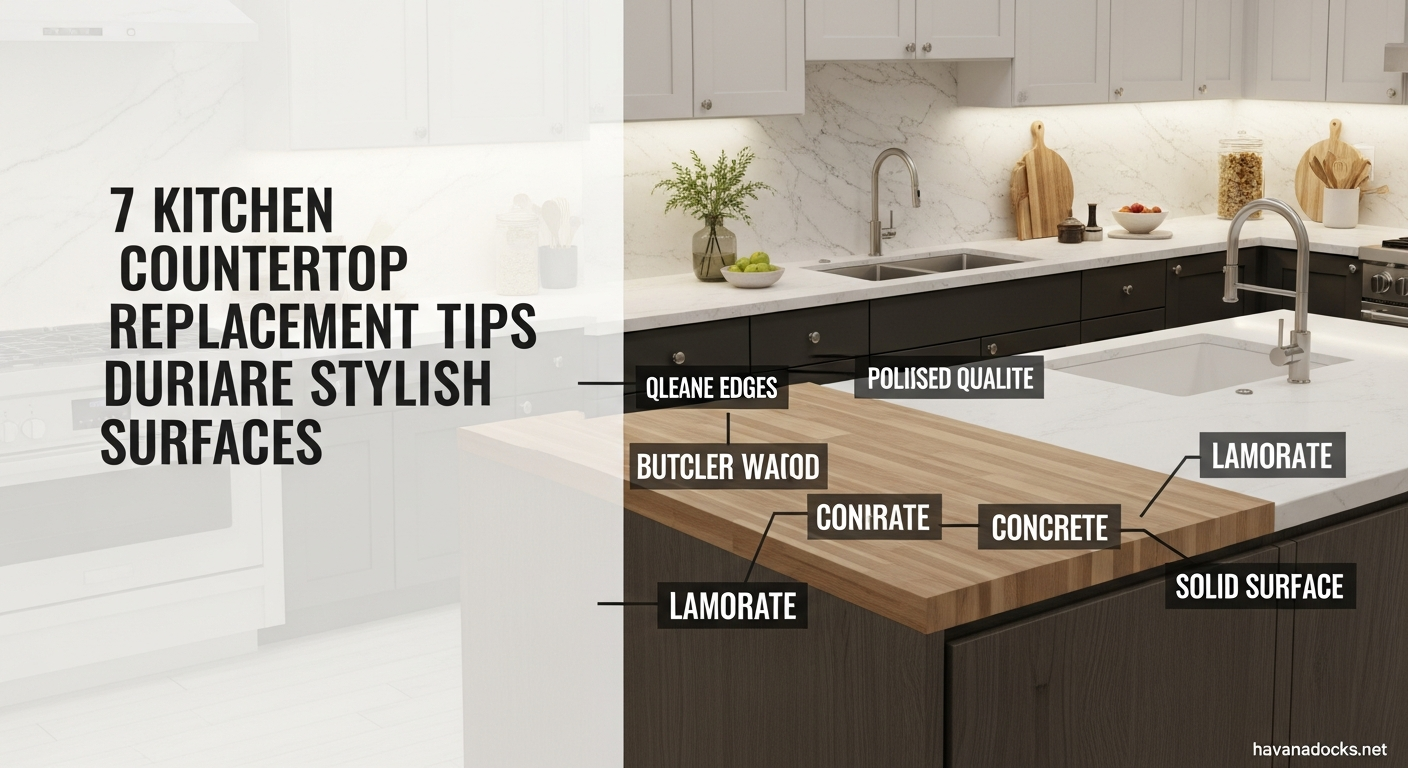
Maintaining Your Renovated Kitchen Cabinets
Proper maintenance is essential to keep your renovated kitchen cabinets looking their best for years to come. Here are some tips to help you preserve their beauty, durability, and functionality, ensuring your investment continues to provide value and visual appeal.
First, regular cleaning is crucial. Use a soft cloth or microfiber towel with mild dish soap and warm water to wipe down cabinet surfaces weekly. Avoid harsh chemicals, abrasive scrubbers, or ammonia-based products, as these can damage finishes, cause discoloration, or wear down protective coatings. For grease buildup, a gentle vinegar-and-water solution works well, but it should be used sparingly to avoid dulling the surface.
Second, pay attention to moisture control. Kitchens are naturally exposed to humidity, steam, and occasional spills. Always wipe moisture immediately—whether from cooking steam, splashes near the sink, or wet hands. Long-term exposure to water can cause warping, swelling, or peeling, especially in wood or MDF cabinetry. If your cabinets are near heat sources like stoves or dishwashers, consider installing heat shields to prevent long-term deterioration.
Third, avoid excessive weight inside your cabinets. Overloading shelves can lead to sagging, broken hinges, or structural stress. Distribute heavy items—like cast iron pans, stacks of plates, or small appliances—across multiple shelves. For upper cabinets, keep heavier objects closer to the bottom shelf for safety and stability.
Fourth, inspect and tighten hardware regularly. Hinges, handles, drawer slides, and knobs can loosen over time with frequent use. A simple screwdriver adjustment every few months can prevent wobbling, misalignment, or long-term damage. If soft-close hinges or drawer tracks begin to stick, clean them gently and lubricate them with manufacturer-approved products to maintain smooth performance.
Fifth, protect cabinet surfaces from heat, sunlight, and scratches. Use trivets or mats under hot pots and pans, and avoid placing heat-generating appliances directly below upper cabinets for extended periods. Prolonged sunlight exposure can fade paint or wood finishes—using curtains, blinds, or UV-protection film can help preserve their original color. Additionally, use cutting boards for food preparation to prevent accidental scratches on nearby cabinet surfaces.
Finally, consider annual deep cleaning and inspection. This includes removing everything from the cabinets, wiping down interiors, checking for signs of wear, and refreshing protective coatings if needed. Wood cabinets may benefit from occasional polishing or conditioning to maintain their natural luster.
By following these maintenance tips consistently, you can extend the life of your renovated kitchen cabinets, keeping them functional, stylish, and looking like new for many years to come.
Regular Cleaning
Wipe down your cabinet doors and drawer fronts regularly with a damp cloth and mild detergent to remove spills, grease, and fingerprints. Avoid using abrasive cleaners or harsh chemicals that can damage the finish.
Prompt Spill Cleanup
Clean up spills immediately to prevent staining or water damage. Use a soft cloth to blot the spill and avoid rubbing, which can spread the stain.
Avoid Excessive Moisture
Protect your cabinets from excessive moisture by using a range hood when cooking and wiping up any water that splashes near the sink.
Check Hardware Regularly
Inspect your cabinet hardware regularly and tighten any loose screws to prevent the doors and drawers from sagging or becoming misaligned.
Conclusion
A kitchen cabinet renovation is a rewarding investment that can transform the heart of your home. By carefully planning your project, choosing the right materials and finishes, and avoiding common mistakes, you can create a fresh, modern look that you’ll enjoy for years to come. Whether you opt for a simple coat of paint or a more extensive refacing project, remember that a well-executed kitchen cabinet renovation can significantly enhance your kitchen’s aesthetics, functionality, and overall value. Embrace the possibilities and embark on your journey towards your dream kitchen today!

